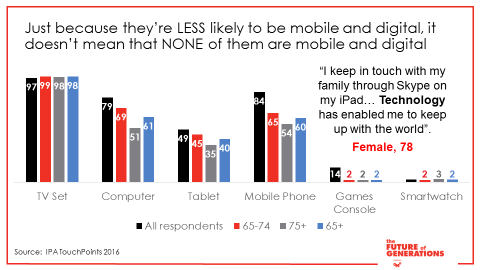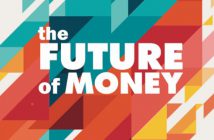Millennials, Generation Y, Generation X, Generation Z, Baby Boomers, The Silent Generation, The Lost Generation.
Sometimes it feels like we’re drowning in names for different generations and a raft of different studies explaining to us what each generation is like. We are constantly being told how different generations behave, what makes them tick and how we should reach them and speak to them.
Indeed, when we launched our Future of Generations research earlier this year, we started with the premise that we needed to understand different generations. But as our research progressed, we realised that we should all be looking beyond generations in marketing. While those short cuts we use to describe generations can be useful to give us some cultural background about different age groups, they are too broad, too sweeping, and miss the nuances that can often help us to develop really meaningful and effective communications.
For example, so often we group those over 65 as one massive, homogeneous group. A group which is 11.3 million strong according to ONS (that’s a massive 22% of the population) and who often span over a quarter of a century are often either ignored in terms of a target audience or their media habits are assumed to be homogeneous. When we take the time to actually look at the data behind these assumptions, we often see a completely different picture. While it may be true that older age groups are less likely to be at the cutting edge of new technology, we should not fall into the trap of thinking that none of this group use computers, tablets or mobiles. According to TouchPoints, the weekly reach of tablets amongst those aged 64-75 is often closer to the broader population than we might first assume, while over half of those aged 75+ use a computer and 35% use a tablet in an average week.

Working with stereotypes and pre-conceptions can lead us to develop communications that, at best don’t resonate and, at worst, alienate the older generations.
At the other end of the scale, we hear lots about Millennials, often without any definition of who falls into this group. A broadly accepted definition is that those aged between 16 and 34 are all classed as Millennials and we often hear statements about their media consumption, their attitudes and how this group spend their time. But surely anyone who knows a 16 year old, still at school and living with their parents and a 34 year old, who may have a mortgage, children and a full-time job, knows that they are worlds apart? By merging all of the rich, and often world defining differences between people within this groups will almost certainly lead us to develop communications that reach the wrong people, at the wrong time, with the wrong message.
Moving Beyond Generations
So, what can we do to avoid falling into the trap of using generations or other sweeping definitions in our communications? We believe that the first step is to use data, research and observed behaviours from real people to understand different audiences better. We need stronger insights that go beyond age and stereotypes to understand the relationships that people have with our category and brand, and what triggers, motivations and needs are important to them. For example, we can identify life events that have the highest correlation with specific behaviours and use digital signals to identify those people that are most likely to either be going through that event now or who are likely to go through that event soon, no matter what their age. While it may often still be the case that age is a core anchor variable that should be used to target our audiences, we believe that this should come from a deep understanding of this audience rather than a broad, sweeping generalisation that overlooks the richness and diversity of our lives.




